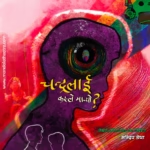As a theatre artist and architect, I believe space can give rise to new forms when unleashed in the imagination of the theatre. Each space comes alive when it resonates with its surrounding ecology. To elaborate further, I’ll expand on the concept of an open-box theatre, which is a space open to receiving and integrating—both the performance and its surrounding ecology.
The existing models of the proscenium and black box theatres manifested as a response to times that are no longer ours. The enclosed proscenium theatre spaces in the early 16th century sought to enhance the experience of “spectacle” by limiting access to a select audience and separating the audience from the performers using the proscenium arch. In the 20th century, sandwiched between the two world wars, the birth of the black box theatre was a call for intimacy and affordability while offering escape into fantasy.
Our evolving world necessitates reimagining theatre as a space that resonates with our present times. Nowadays, while technology and migration have connected the world, we also witness growing disparities and divisions among different social classes and communities. In re examining our theatre spaces, we have a unique opportunity to redefine them as inclusive arenas where everyone feels a sense of belonging. Today, where power is often determined by attention spans, directing our attention towards those overlooked in the realm of theatre and in real life holds significant power. This urgent need for openness and connection must also be embodied in our theatre spaces.
I recently had the opportunity to design a theatre-dwelling, called Sahyande Theatre, in Attapadi, Kerala, India, for theatre duo Sankar Venkateswaran and Satoko Tsurudome. As I didn’t know the context of the land deeply enough to truly understand the invisible, I was keen to keep the building as open to the surroundings as possible, in the hope that this openness would allow visibility and recognition of the invisible. Along with openness, the design aimed to create a theatre space that offered flexibility, intimacy, affordability, performer focus, and privacy to those for whom it doubled as a home.

The primary idea of the building is to receive the surroundings. Three main design elements support this. First, the slope of the mountain flows into the building through the amphitheatre steps, creating a rooftop performance area accessible to the public.
Second, the semi-public rehearsal and performance area connect the interior space with the exterior. The traditional notion of a solid and flat cyclorama is transformed by opting for an open and transparent design for the interior performance space. As the proscenium arch is absent, the transparent walls act as the theatre’s “eyes”, framing each performance against the captivating backdrop of the lush jungle. The angled back wall amplifies the dramatic effect by accentuating the space’s perspectival lines, intensifying the performers’ presence and actions. Furthermore, the window walls can be opened, allowing for customisable sound reflection within the space.
Third, echoing the contours of the mountain, the building’s spine adopts a curved form, embracing both the upper and lower performance areas and fostering a sense of unity. The arc is also an indication of a larger whole—of the tangible Attappadi valley and the intangible global network that Sankar and Satoko belong to. Moreover, this curvature directs the viewer’s perspective towards the performer, enhancing the visual and auditory focus. Conversely, the same curve provides a sense of privacy to the rooms situated on the convex side.
The design of the indoor space allows for flexible seating arrangements, accommodating audiences on one, two, or all three sides of the “stage” when the window walls are open. Additionally, there is a gallery on the first floor where audiences can be seated, providing versatility in staging and audience perspectives. This indoor space is designed to create an intimate performance experience. On the other hand, the rooftop amphitheatre, positioned between the mountain and the valley, lends itself to more expansive and immersive performances.
During construction, the emphasis was to create minimal disturbance to the site and trees and create maximum harmony with the surroundings while keeping the programmatic requirements in mind. The green roof is one of various sustainable energy ideas incorporated into the building. By envisioning Sahyande Theatre as an open box, a strong connection with the surrounding environment is forged, enveloping the broader community in its embrace and providing creative fodder for performances.
In Kathmandu, too, we can move away from conventional proscenium and black box theatres towards open-box theatres by engaging with the city’s naturally rich urban spaces, much like traditional Nepali performances. The creative challenges posed by open-box theatres to current Nepali theatre practices can yield new perspectives and forms, creating a unique global identity for the Nepali theatre of tomorrow.
Spaces come alive through energy, form, size, skin, texture, cultural context, and personal history. It is far from neutral, and this non-neutrality holds tremendous potential. It is the medium through which all of life is connected—only through space can we experience scale, movement, vision, sound, cultures, and audiences. Thus, when we engage actively with space, we engage with all these intricate and profound elements of our ecology, unlocking vast opportunities for theatre, connection, and lived experiences.
Kathmandu has a burgeoning theatre culture. While theatre forms have evolved to reflect the changing times and issues, theatre spaces in the city have not. The city has seen a movement away from large government theatre halls (such as Rastriya Naachghar and Pragya Pratisthan Bhawan) towards smaller, independent-theatre-company-owned black boxes (such as Shilpee, Sarwanam, Mandala and other theatres). It is also home to many traditional performances that have taken place in the city’s streets and squares for centuries.
The city’s contemporary theatre practices have been limited by mainly using two kinds of spaces—proscenium and black box theatres. Kathmandu’s dense fabric, richness and human scale are ideal for staging theatre performances. Open-box theatres within Kathmandu’s urban spaces can open up the potential to discover new theatre forms that are more connected and rooted in the local ecology. Contemporary performances will be infused with new perspectives when they open themselves to real, physical contexts.
I believe the time has come to re-examine the theatre spaces we use in Kathmandu. The open-box theatre calls for performances to be immersed in Kathmandu’s urban fabric, showing us the biological, political, artistic and physiological benefits of connecting performances to authentic and rich physical spaces. While the open-box theatre will provide new challenges for the city’s theatre practitioners, these creative challenges will transform existing theatre practices into emergent new forms for Nepal.






